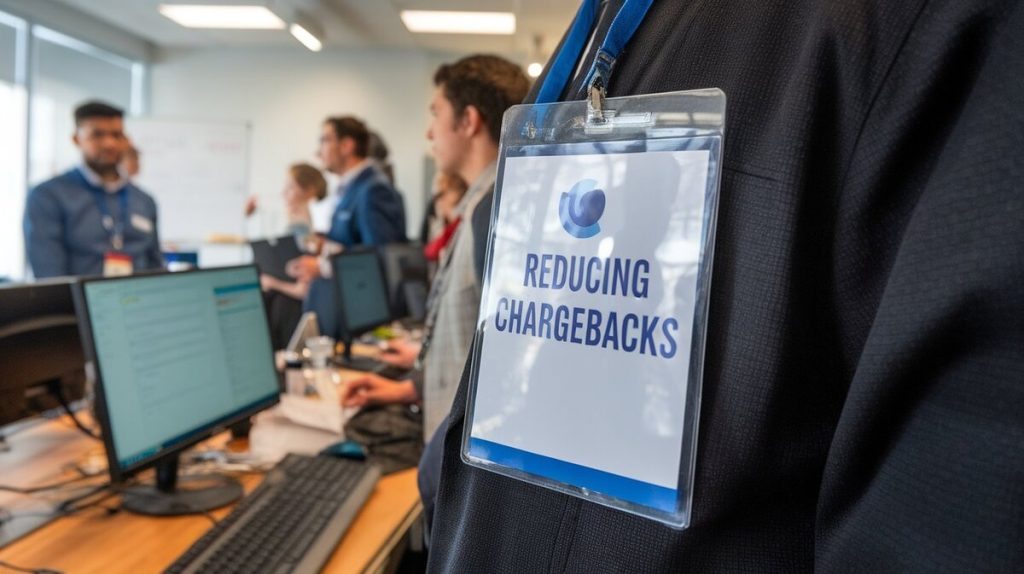Chargebacks are a significant issue for businesses. When customers dispute transactions, it often results in a reversed payment, costing the merchant both the transaction amount and additional fees. Preventing chargebacks is crucial for maintaining revenue and operational efficiency.
The Financial and Operational Impact of Chargebacks
Chargebacks come with significant costs. Beyond the refunded transaction, businesses face additional fees. These range from $15 to $100, and for high-risk transactions, can go as high as $500. Additionally, chargebacks can damage the merchant’s relationship with payment processors, potentially resulting in increased fees or account termination.
Table 1: Financial Impact of Chargebacks
| Impact | Details |
|---|---|
| Refund Amount | The original transaction amount returned to the customer |
| Chargeback Fees | $15-$100 (up to $500 for high-risk transactions) |
| Operational Costs | Time spent managing disputes, legal fees, compliance expenses |
| Inventory Loss | Products may not be returned, leading to additional losses |
| Merchant Account Risk | High chargeback ratios can lead to account termination |
Chargebacks not only affect revenue but also require administrative effort. Handling disputes takes time and resources that could be better spent on core business activities. Businesses with high chargeback rates risk being labeled as “high risk,” leading to higher fees and the potential loss of merchant accounts.
Common Causes of Chargebacks
Understanding why chargebacks happen is essential for prevention. Common causes include:
- Fraud: Customers dispute unauthorized charges.
- Non-delivery: Goods or services aren’t delivered as promised.
- Unrecognized Charges: Vague transaction descriptors lead to disputes.
- Customer dissatisfaction: Inaccurate product descriptions or poor quality often result in disputes.
According to Mastercard, up to 70% of chargebacks result from friendly fraud, where customers dispute legitimate transactions for reasons such as unrecognized purchases.
11 Key Strategies to Reduce Chargebacks
1. Improve Customer Communication
Clear communication with customers helps reduce chargebacks. Ensure your billing descriptors are recognizable so customers know what they’re being charged for. This reduces disputes based on unrecognized charges. According to VISA, unclear billing information is a common cause of chargebacks.
2. Implement Fraud Detection Tools
Fraud prevention systems are critical for reducing chargebacks. Tools like Address Verification System (AVS) and Card Verification Value (CVV) checks help verify transaction authenticity. Many payment processors offer machine learning algorithms to detect fraud patterns.
3. Use Secure Payment Gateways
Using a secure payment gateway reduces fraud-related chargebacks. Payment processors like Stripe, Braintree, and Checkout.com provide encryption and fraud detection to minimize unauthorized transactions. Ensure your payment processor is PCI DSS compliant, which is a standard that protects cardholder data.
4. Track Deliveries and Maintain Records
Use delivery tracking systems to provide proof of delivery. Keeping detailed records of transactions, customer interactions, and shipping confirmations is critical when disputing chargebacks. Mastercard recommends clear documentation as an effective way to dispute a chargeback.
Table 2: Best Practices for Delivery-Related Chargeback Prevention
| Strategy | Benefit |
|---|---|
| Delivery tracking | Provides proof of delivery |
| Keep communication records | Supports dispute resolution |
| Accurate product descriptions | Reduces chargebacks due to unmet expectations |
| Send real-time notifications | Keeps customers informed about their order status |

5. Offer Proactive Refund Policies
Offering refunds is cheaper than dealing with chargebacks. A clear return policy makes customers more likely to request refunds directly, rather than disputing the transaction. Mastercard’s documentation shows that businesses with transparent return policies experience 15% fewer chargebacks.
6. Adopt Automation for Chargeback Management
Automating chargeback management reduces manual effort and increases efficiency. Merchanto.org, an official partner of VISA and Mastercard, provides a platform that helps businesses manage chargebacks by monitoring transactions and identifying fraud. Their service reduces the risk of disputes and helps businesses protect their bottom line. Check out their solution here.
7. Use AI and Machine Learning to Identify Risky Transactions
AI-powered fraud detection helps identify high-risk transactions before they become chargebacks. These systems continuously analyze transaction data to flag suspicious activity and prevent disputes.
8. Ensure Clear Return and Refund Policies
A clear return policy prevents chargebacks by giving customers a straightforward way to resolve issues. Ensure your return and refund policies are visible and easy to understand. VISA reports that transparent return policies reduce chargebacks by up to 15%.
9. Regularly Monitor Chargeback Reason Codes
Understanding chargeback reason codes helps businesses identify common causes of disputes and develop targeted prevention strategies. Analyzing these codes allows for a more proactive approach to reducing chargebacks.
10. Implement Predictive Risk Management
Predictive modeling tools forecast the likelihood of chargebacks based on past transactions. These tools allow businesses to block high-risk transactions before they lead to disputes, reducing exposure to chargebacks.
11. Use Chargeback Alerts
Chargeback alert services notify merchants of disputes before they escalate into formal chargebacks, giving businesses time to resolve the issue with the customer. Many payment processors offer alert systems as part of their fraud prevention tools.

The Role of Payment Processors in Chargeback Prevention
Payment processors such as Stripe, Braintree, and Checkout.com provide a range of tools to help businesses reduce chargebacks. They offer fraud detection, encryption, and real-time transaction monitoring, which can reduce disputes. These tools not only help prevent chargebacks but also ensure compliance with industry standards such as PCI DSS.
Table 3: Comparison of Fraud Prevention Tools by Major Payment Processors
| Payment Processor | Fraud Detection Tools | Compliance Features |
|---|---|---|
| Stripe | Machine Learning, AVS, CVV Checks | PCI DSS Compliant |
| Braintree | Fraud Scoring, 3D Secure | Risk Monitoring |
| Checkout.com | Real-Time Fraud Detection | Adaptive Learning for Fraud |
Conclusion
Reducing chargebacks is essential for protecting your business from unnecessary financial losses and maintaining strong relationships with payment processors. Clear communication, fraud detection, and automation are key to reducing disputes. By adopting the strategies outlined here, businesses can minimize their exposure to chargebacks and safeguard revenue.
By implementing these strategies, businesses can reduce chargebacks, protect their bottom line, and improve operational efficiency. Maintaining a low chargeback ratio is critical for long-term success in today’s digital marketplace.



